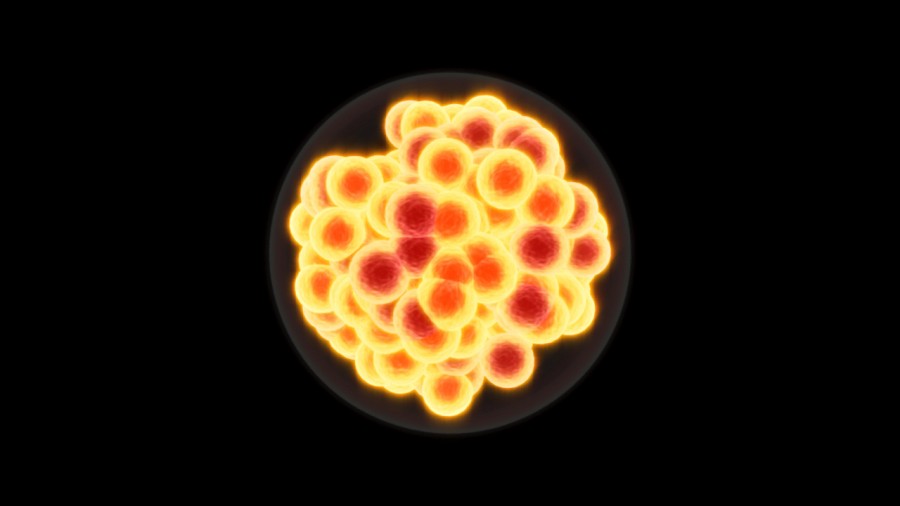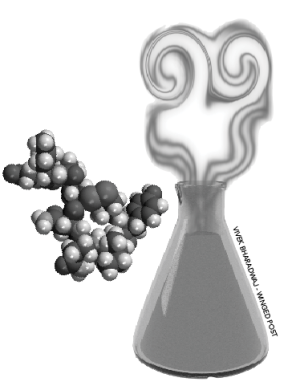Four new elements added to the periodic table
Courtesy of Lawrence Livermore National Laboratory
An artist’s concept of element 117, one of the four heavy elements that will be added to the periodic table. The International Union of Pure and Applied Chemistry (IUPAC) recently recognized elements 113, 115, 117 and 118 after receiving conclusive evidence from separate teams in Japan, Russia, and the United States.
January 10, 2016
The International Union of Pure and Applied Chemistry (IUPAC) officially recognized elements 113, 115, 117 and 118 on Dec. 30, after a lengthy process for approval.
All four elements cannot be found in nature, due to the fact that they decay rapidly. Scientists worked to synthetically create the elements in laboratories.
Japan’s largest research center RIKEN, led by Kosuke Morita, received credit for the discovery of element 113. A Russian-American team from the Joint Institute for Nuclear Research in Dubna, Russia; Lawrence Livermore National Laboratory in Livermore, California; and Oak Ridge National Laboratory, Oak Ridge, Tennessee; discovered elements 115, 117 and 118.
It is likely that the recognition of the elements discovered by the Japanese and Russian-American teams will affect the overall interest in chemistry in a positive way.
“Chemistry’s a hot thing now, it’s the sexy science,” upper school chemistry teacher Andrew Irvine said. “Shows like Breaking Bad made it really exciting and new, so it’s a part of popular culture. I think it’s important to get kids and people excited about chemistry and I think it’ll be cool to see what names come up [for the elements].”
According to IUPAC, the studies produced by the Japanese scientists between 2004 and 2012 have given the team the strongest claim to discovering element 113.
The RIKEN team fired beams of zinc at a thin film of bismuth in order to synthesize the element. In 2003, they began bombarding bismuth atoms in a particle accelerator at 10 percent of the speed of light. The team succeeded in fusing two nuclei from these elements in 2004, creating the first nucleus of element 113; however, it decayed in less than a thousandth of a second. A year later, the team once again produced element 113, but IUPAC did not consider the demonstration a discovery.
The team went seven years without finding conclusive evidence. It must be noted that the fusion in order to produce an atom with 113 protons and 165 neutrons is extremely unlikely.
After leaving the beam active for 533 days with more than 130 quintillion zinc atoms fired, according to Nature, the team produced compelling evidence that they had finally synthesized the elusive element, making element 113 the first to be discovered in east Asia.
Although the newly recognized elements have no practical use in daily life, these elusive particles could be a key step towards finding the fabled “island of stability,” a term in nuclear physics that refers to a region beyond the periodic table where new elements with special numbers of neutrons and protons show increased stability.
“The better we get at finding [elements], the more we’ll be able to discover,” upper school physics teacher Lisa Radice said. “I think it’ll be more interesting when we find things that are actually stable and potentially useful. It still furthers our knowledge of elements and what matter is made of, so there’s no downside of finding them, but at this point, I think it’s hard to see the practical benefit.”
Alexander Young (9) expressed his conviction in the significance of the recognized elements.
“I think it’s a really important new advancement, because it goes to further expand the periodic table of elements and our basic understanding of physics, chemistry – in fact, all fields of science,” Alexander said. “And basically, it’s another milestone in understanding our universe and the basic elements that make it up.”
Although the official recognition of elements 113, 115, 117 and 118 is a major milestone in the history of chemistry, scientists hope to continue their research, and to discover other elements beyond element 118.


















![“[Building nerf blasters] became this outlet of creativity for me that hasn't been matched by anything else. The process [of] making a build complete to your desire is such a painstakingly difficult process, but I've had to learn from [the skills needed from] soldering to proper painting. There's so many different options for everything, if you think about it, it exists. The best part is [that] if it doesn't exist, you can build it yourself," Ishaan Parate said.](https://harkeraquila.com/wp-content/uploads/2022/08/DSC_8149-900x604.jpg)




![“When I came into high school, I was ready to be a follower. But DECA was a game changer for me. It helped me overcome my fear of public speaking, and it's played such a major role in who I've become today. To be able to successfully lead a chapter of 150 students, an officer team and be one of the upperclassmen I once really admired is something I'm [really] proud of,” Anvitha Tummala ('21) said.](https://harkeraquila.com/wp-content/uploads/2021/07/Screen-Shot-2021-07-25-at-9.50.05-AM-900x594.png)







![“I think getting up in the morning and having a sense of purpose [is exciting]. I think without a certain amount of drive, life is kind of obsolete and mundane, and I think having that every single day is what makes each day unique and kind of makes life exciting,” Neymika Jain (12) said.](https://harkeraquila.com/wp-content/uploads/2017/06/Screen-Shot-2017-06-03-at-4.54.16-PM.png)








![“My slogan is ‘slow feet, don’t eat, and I’m hungry.’ You need to run fast to get where you are–you aren't going to get those championships if you aren't fast,” Angel Cervantes (12) said. “I want to do well in school on my tests and in track and win championships for my team. I live by that, [and] I can do that anywhere: in the classroom or on the field.”](https://harkeraquila.com/wp-content/uploads/2018/06/DSC5146-900x601.jpg)
![“[Volleyball has] taught me how to fall correctly, and another thing it taught is that you don’t have to be the best at something to be good at it. If you just hit the ball in a smart way, then it still scores points and you’re good at it. You could be a background player and still make a much bigger impact on the team than you would think,” Anya Gert (’20) said.](https://harkeraquila.com/wp-content/uploads/2020/06/AnnaGert_JinTuan_HoHPhotoEdited-600x900.jpeg)

![“I'm not nearly there yet, but [my confidence has] definitely been getting better since I was pretty shy and timid coming into Harker my freshman year. I know that there's a lot of people that are really confident in what they do, and I really admire them. Everyone's so driven and that has really pushed me to kind of try to find my own place in high school and be more confident,” Alyssa Huang (’20) said.](https://harkeraquila.com/wp-content/uploads/2020/06/AlyssaHuang_EmilyChen_HoHPhoto-900x749.jpeg)










